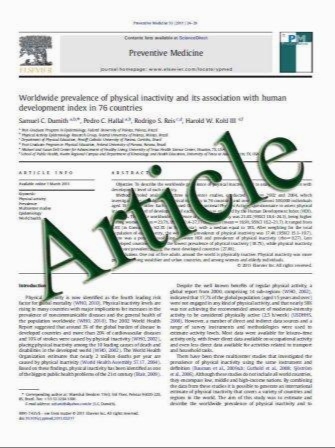Follicle-stimulating hormone and bioavailable estradiol are less important than weight and race in determining bone density in younger postmenopausal women
- نوع فایل : کتاب
- زبان : انگلیسی
- مؤلف : M. L. Gourlay & J. S. Preisser & C. A. Hammett-Stabler & J. B. Renner & J. Rubin
- چاپ و سال / کشور: 2010
Description
Summary The association between follicle-stimulating hormone (FSH) and bone density was tested in 111 postmenopausal women aged 50.64 years. In the multivariable analysis, weight and race were important determinants of bone mineral density. FSH, bioavailable estradiol, and other hormonal variables did not show statistically significant associations with bone density at any site. Introduction FSH has been associated with bone density loss in animal models and longitudinal studies of women. Most of these analyses have not considered the effect of weight or race. Methods We tested the association between FSH and bone density in younger postmenopausal women, adjusting for patient-related factors. In 111 postmenopausal women aged 50.64 years, areal bone mineral density (BMD) was measured at the lumbar spine, femoral neck, total hip, and distal radius using dual-energy X-ray absorptiometry, and volumetric BMD was measured at the distal radius using peripheral quantitative computed tomography (pQCT). Height, weight, osteoporosis risk factors, and serum hormonal factors were assessed. Results FSH inversely correlated with weight, bioavailable estradiol, areal BMD at the lumbar spine and hip, and volumetric BMD at the ultradistal radius. In the multivariable analysis, no hormonal variable showed a statistically significant association with areal BMD at any site. Weight was independently associated with BMD at all central sites (p<0.001), but not with BMD or pQCT measures at the distal radius. Race was independently associated with areal BMD at all sites (p.0.008) and with cortical area at the 33% distal radius (p=0.004). Conclusions Correlations between FSH and bioavailable estradiol and BMD did not persist after adjustment for weight and race in younger postmenopausal women. Weight and race were more important determinants of bone density and should be included in analyses of hormonal influences on bone.
Osteoporos Int DOI 10.1007/s00198-010-1505-x Received: 23 August 2010 / Accepted: 15 November 2010


